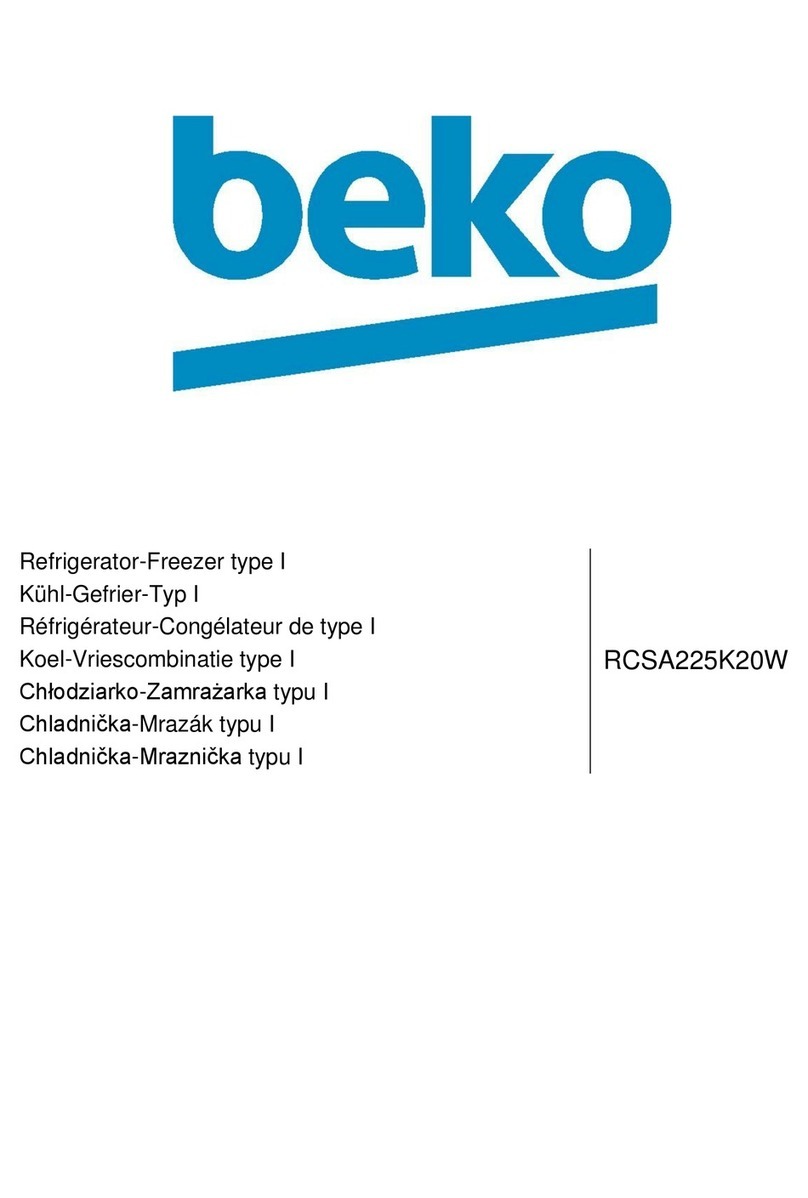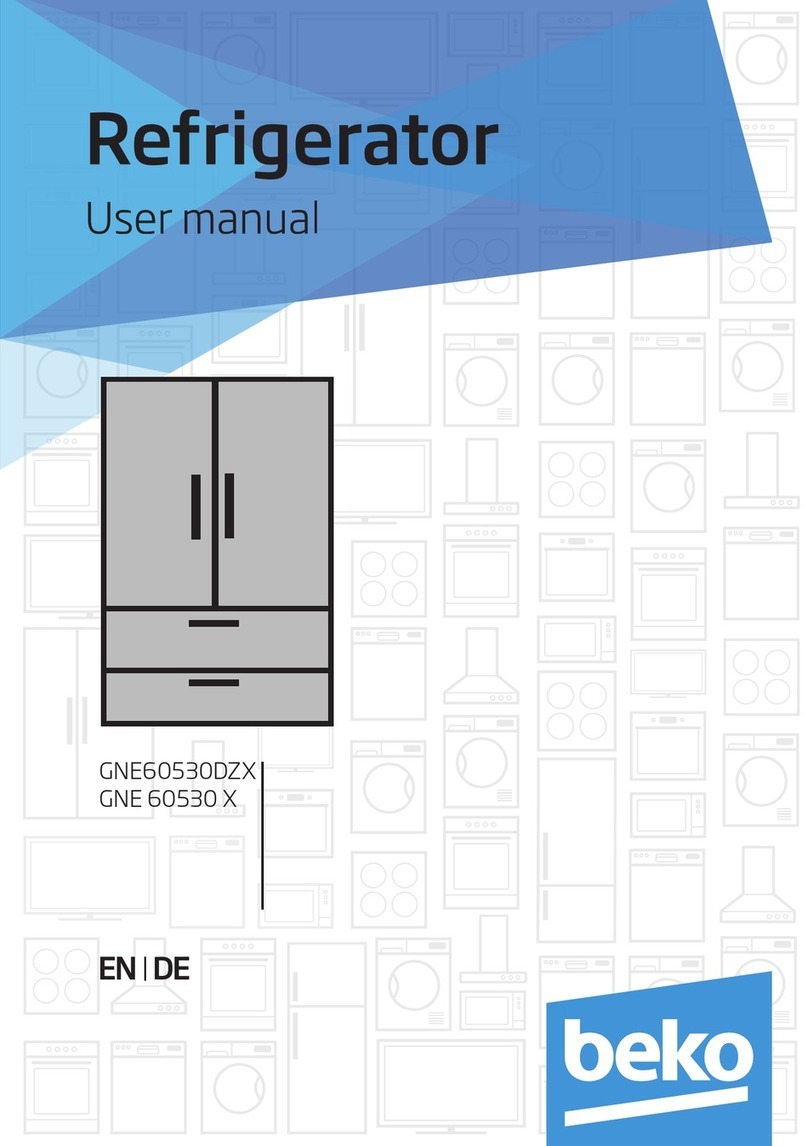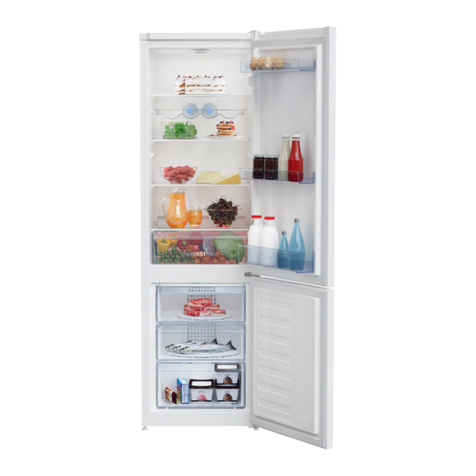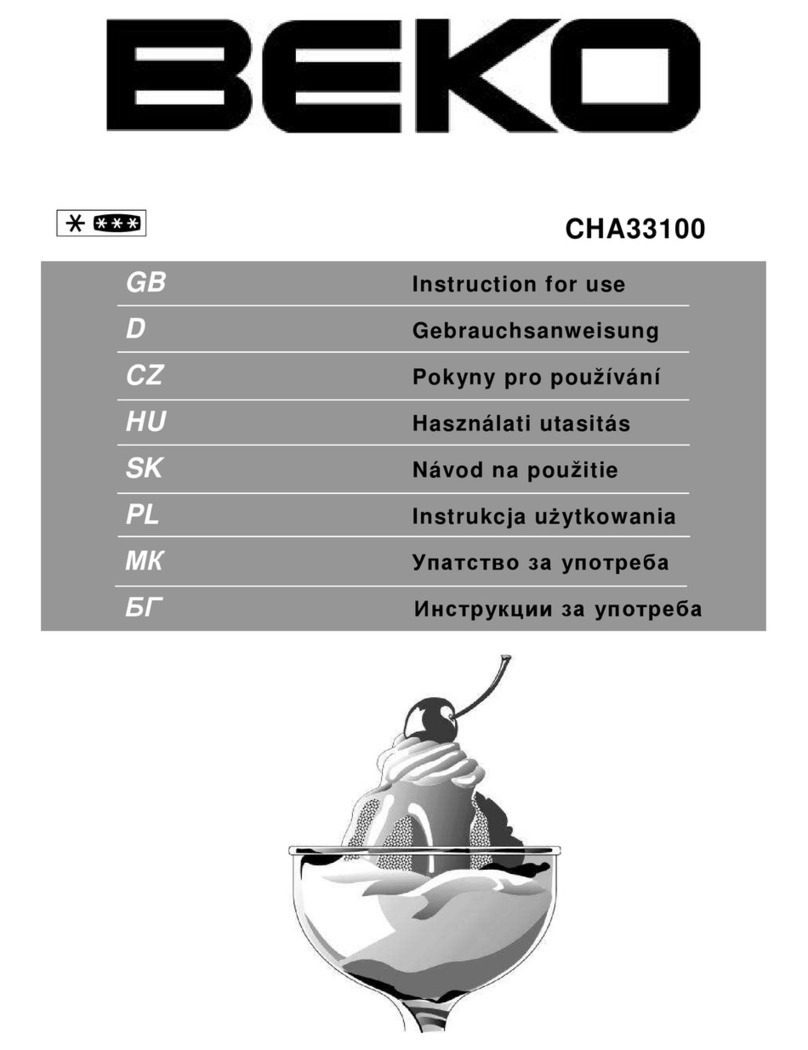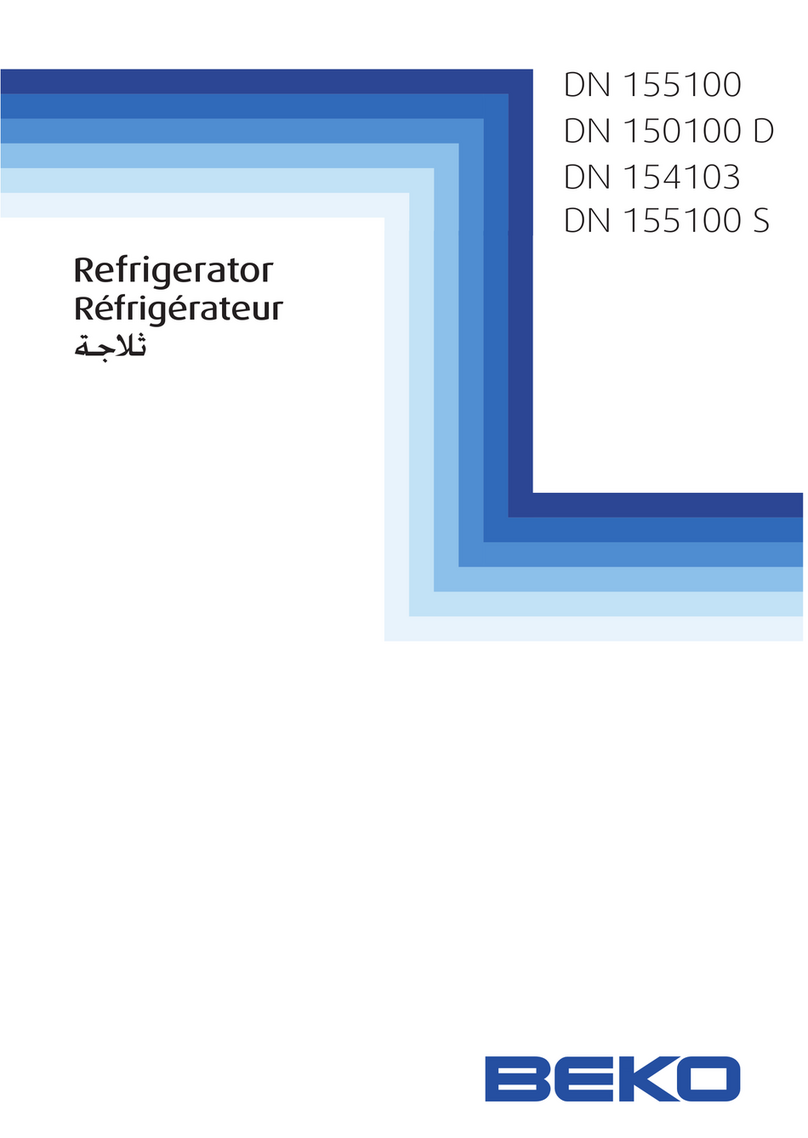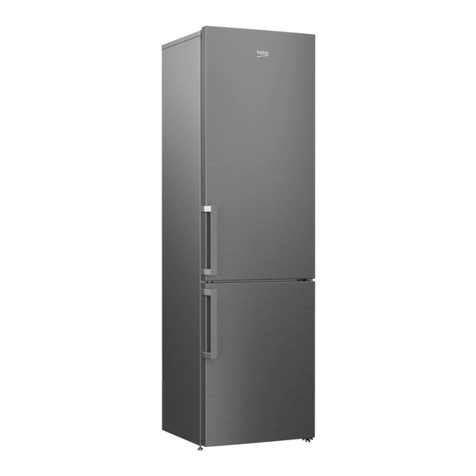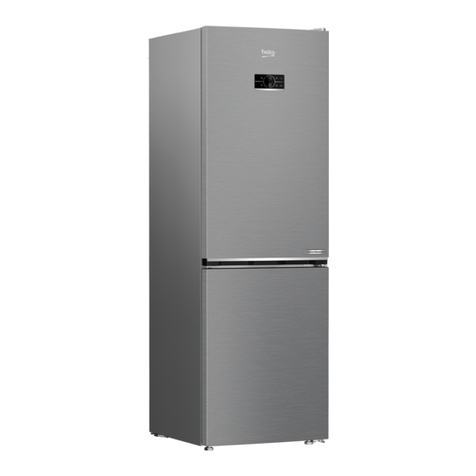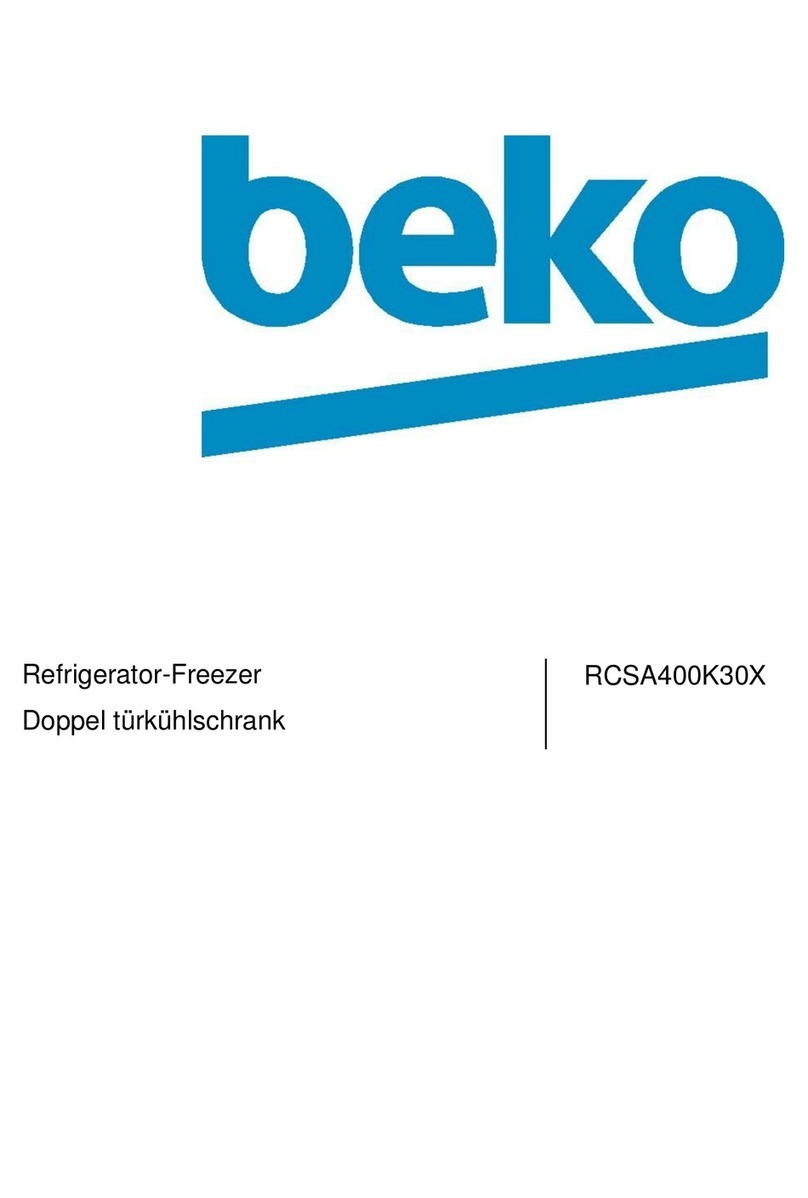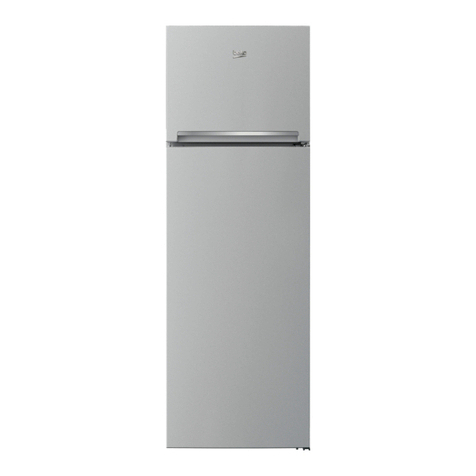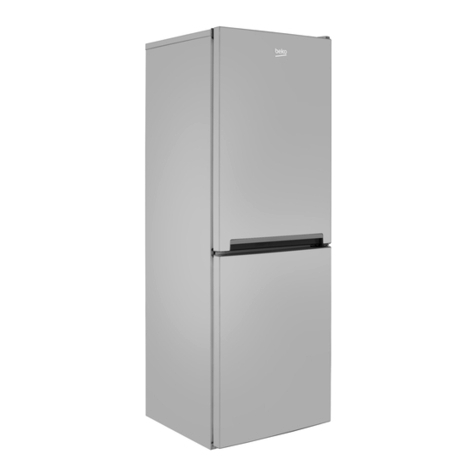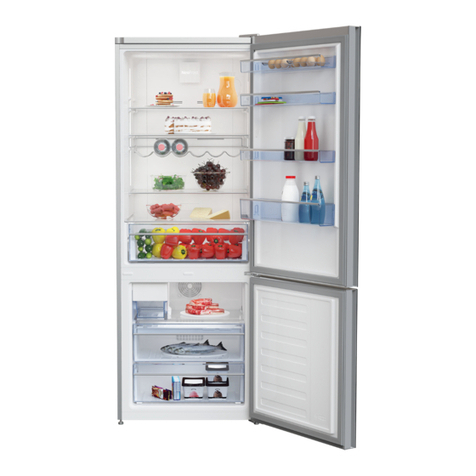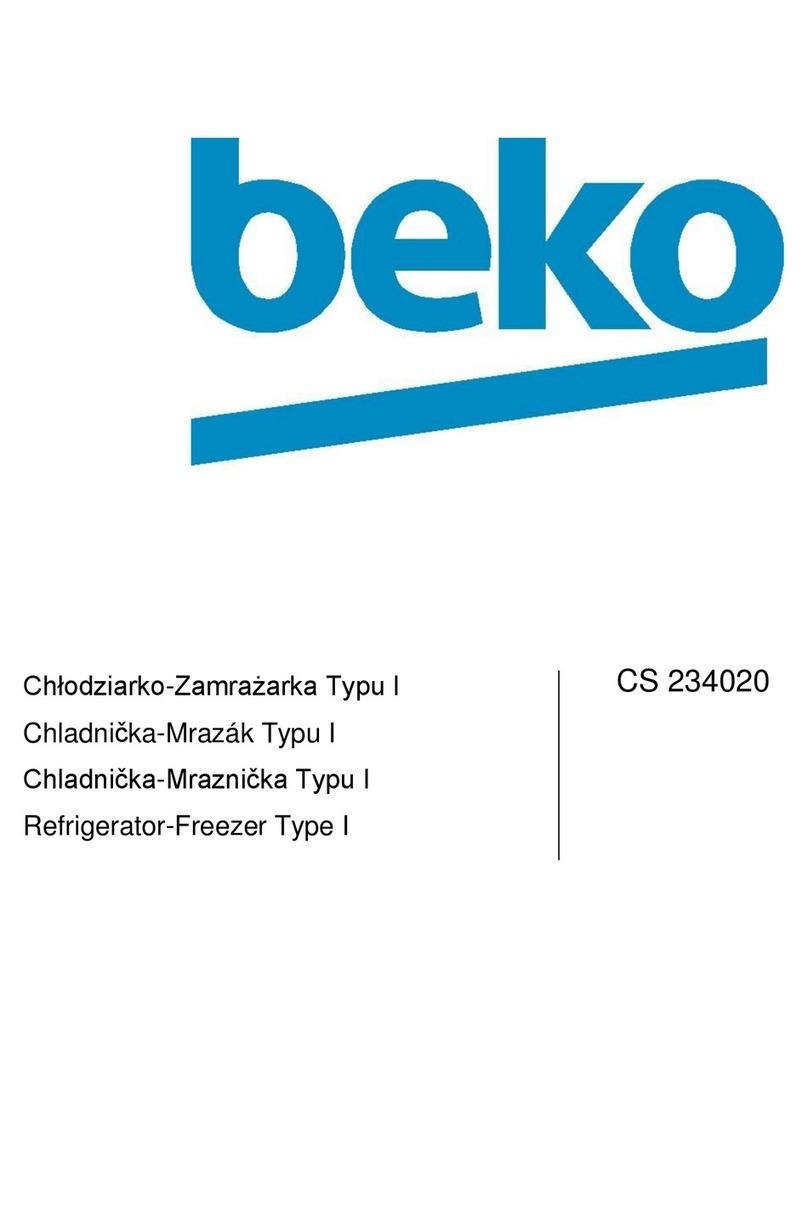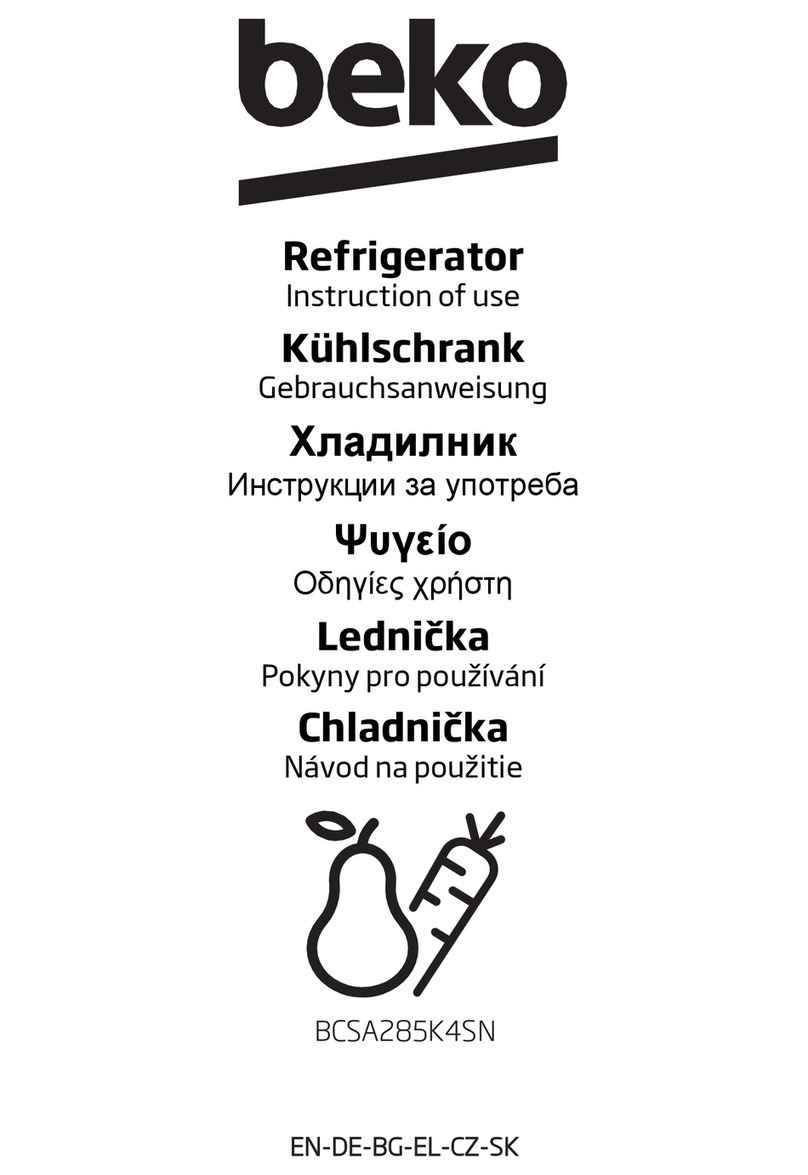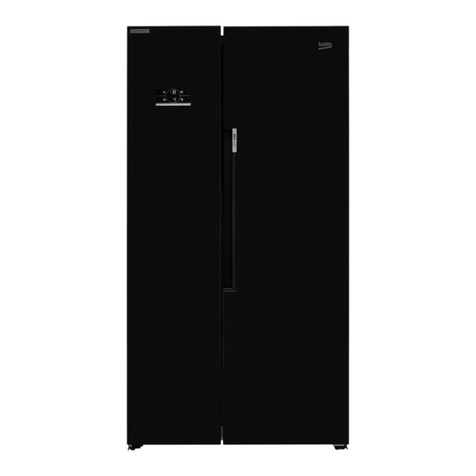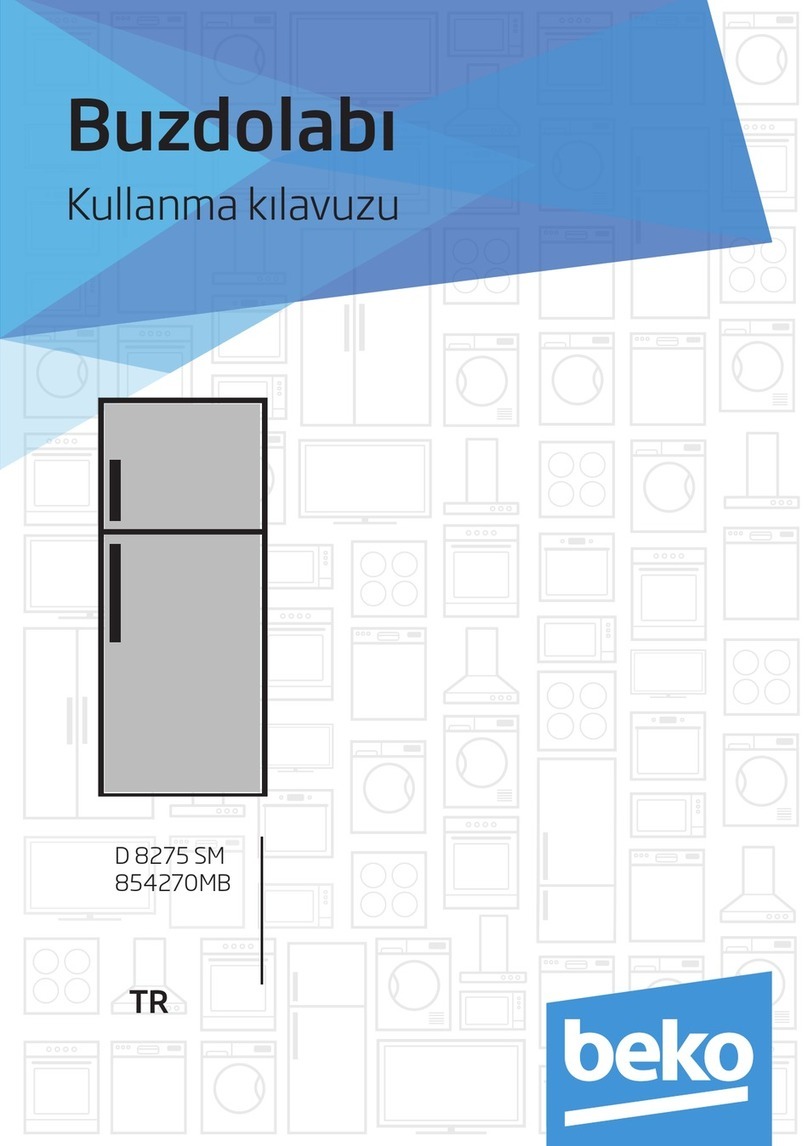
10 / 22 EN Refrigerator/User Manual
3Installation
3.1. Appropriate
installation location
Contact an Authorized Service for the
installation of the product. In order to
prepare the product for use, refer the
information in the user manual and
ensure that electrical installation and
water installation are appropriate. If not,
call a qualified electrician and technician
to have any necessary arrangements
carried out.
B
Manufacturer shall
not be held liable for damages
that may arise from procedures
carried out by unauthorized
persons.
B
WARNINGProduct must
not be plugged in during
installation. Otherwise, there
is the risk of death or serious
injury!
A
WARNING:
If the door clearance of the
room where the product shall
be place is so tight to prevent
passing of the product, remove
the door of the room and pass
the product through the door
by turning it to its side; if this
does not work, contact the
authorized service.
surface to prevent jolts.
away from heat sources such as hobs,
heater cores and stoves and at least 5
cm away from electrical ovens.
direct sun light and kept in humid
places.
provided around your product in order
to achieve an efficient operation. If the
product is to be placed in a recess in
the wall, pay attention to leave at least
5 cm distance with the ceiling and side
walls.
3.2. Installing the
plastic wedges
Plastic wedges supplied with the
product are used to create the distance
for the air circulation between the
product and the rear wall.
To install the wedges, remove the
screws on the product and use the
screws supplied together with the
wedges.
Insert the 2 plastic wedges onto the
rear ventilation cover as illustrated in
the figure.

